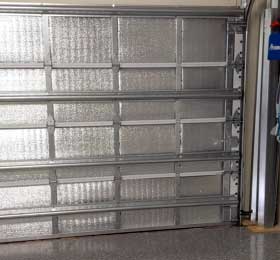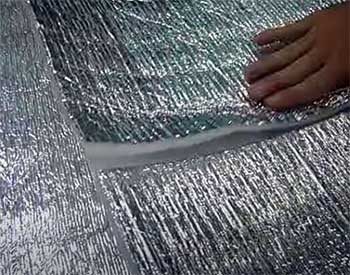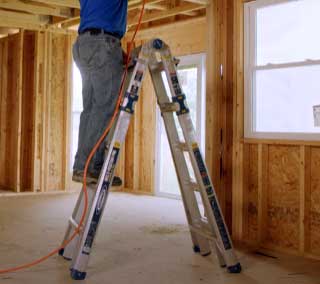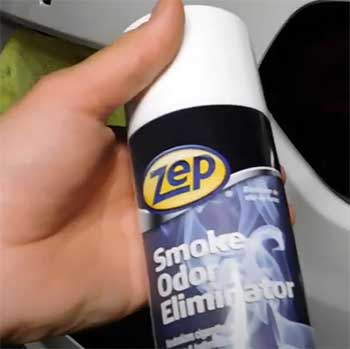When it comes to insulating my home, I’ve always been on the lookout for the best products out there. Insulation is a crucial part of making a home energy-efficient and comfortable, and there are countless options available.
Today, I want to share my experience with Prodex insulation. In this article, I’ll cover the pros, cons, and maintenance tips for Prodex insulation, compare it with other brands, and answer some common questions.
If you’re considering Prodex for your insulation needs, or just curious about it, stick around. I hope my insights help you make an informed decision.
What Is Prodex Insulation?

Prodex insulation is a type of reflective insulation that uses a combination of foil and polyethylene to create a barrier against heat transfer. This product is particularly known for its ability to reflect radiant heat, which can be a game-changer in both hot and cold climates.
As someone who has used it, I can vouch for its versatility and effectiveness.
Pros of Prodex Insulation
- Energy Efficiency
One of the main reasons I chose Prodex was its excellent energy efficiency. Reflective insulation works by reflecting radiant heat away from your home in the summer and keeping it inside during the winter.
This can significantly reduce your heating and cooling costs. I noticed a drop in my energy bills after installing Prodex, which was a pleasant surprise.
- Easy Installation

Prodex is relatively easy to install. You don’t need to be a professional to get it right.
With a few tools and a bit of patience, you can install it yourself.
This can save you money on professional installation fees.
I found the installation process straightforward, and the instructions provided were clear and easy to follow.
- Moisture Barrier
Another great feature of Prodex is its ability to act as a moisture barrier. This is particularly useful in areas prone to condensation, such as basements or attics.
Prodex helps prevent mold and mildew, which can cause significant damage to your home and health. Since installing Prodex, I’ve noticed a reduction in dampness and related issues.
- Durability
Prodex is highly durable. It’s resistant to tearing and punctures, which means it can withstand a lot of wear and tear. This makes it a great long-term investment for your home. I’ve had Prodex installed for a few years now, and it’s still in excellent condition.
Cons of Prodex Insulation
- Cost
While Prodex is effective, it’s not the cheapest option on the market. The initial cost can be higher than other types of insulation.
However, I found that the energy savings over time can offset this initial expense. It’s worth considering if you’re looking for long-term benefits.
- Installation Challenges
Although I mentioned that Prodex is easy to install, there are some challenges. If your home has a lot of nooks and crannies, it can be tricky to get the insulation to fit perfectly.
Additionally, cutting and fitting the material around pipes and vents can be time-consuming. But with some patience and effort, it’s manageable.
- Air Gap Requirement
Prodex requires an air gap to be effective. This means you need to install it in a way that allows for an air space between the insulation and the surface you’re insulating.
This can add to the complexity of the installation process. I had to make sure there was an adequate air gap, which required careful planning and execution.
Maintenance Tips For Prodex Insulation
- Regular Inspections

To ensure your Prodex insulation remains effective, it’s important to conduct regular inspections.
Check for any signs of damage or wear and tear.
Look for punctures, tears, or areas where the insulation may have come loose.
Addressing these issues promptly can prolong the life of your insulation.
- Cleanliness
Keep your insulation clean. Dust and debris can accumulate on the surface, which can reduce its effectiveness. I make it a point to clean my insulation periodically using a soft brush or cloth. This helps maintain its reflective properties.
- Moisture Control
Even though Prodex acts as a moisture barrier, it’s still essential to manage moisture levels in your home. Use dehumidifiers in areas prone to high humidity, and ensure proper ventilation. This can prevent potential issues with mold and mildew.
Comparing Prodex With Other Insulation Brands
- Prodex Vs. Fiberglass Insulation
Fiberglass insulation is one of the most common types of insulation. It’s made from fine glass fibers and is known for its affordability and ease of installation. However, compared to Prodex, fiberglass has a lower R-value per inch and is less effective at blocking radiant heat.
- Prodex Vs. Spray Foam Insulation
Spray foam insulation is another popular choice. It offers excellent insulation properties and can fill gaps and cracks effectively. However, it’s significantly more expensive than Prodex and requires professional installation.
While spray foam has a higher R-value, Prodex’s reflective properties make it a strong competitor in terms of energy efficiency.
- Prodex Vs. Reflectix
Reflectix is another type of reflective insulation similar to Prodex. It’s also made from foil and polyethylene. The primary difference lies in the thickness and durability.
Prodex is generally thicker and more robust, making it more effective in extreme weather conditions. In my experience, Prodex provided better overall performance compared to Reflectix.
Frequently Asked Questions (FAQ)
The R-value of Prodex insulation can vary depending on how it’s installed and the specific product variant. Typically, Prodex has an R-value of around R-16 to R-22. It’s important to note that reflective insulation like Prodex also relies on its ability to reflect radiant heat, which isn’t fully captured by R-value alone.
Yes, Prodex requires an air gap to be effective. The air gap allows for proper reflection of radiant heat, which is a key component of how this insulation works. Make sure to follow the manufacturer’s guidelines for the appropriate air gap during installation.
Bubble wrap insulation, like Reflectix, can be less durable than Prodex. It’s also more prone to tearing and punctures. Additionally, it may not provide as high an R-value, and its effectiveness can be compromised if not installed correctly with an adequate air gap.
Installing Prodex insulation involves measuring and cutting the material to fit your space, ensuring an appropriate air gap, and securing it in place with staples or adhesive. Make sure to follow the manufacturer’s instructions carefully to achieve the best results. I found that taking my time and double-checking measurements helped ensure a smooth installation process.
Wrapping Up
In conclusion, Prodex insulation has proven to be a valuable addition to my home. Its energy efficiency, ease of installation, and durability make it a solid choice for anyone looking to improve their home’s insulation.
While it comes with a higher initial cost and some installation challenges, the long-term benefits outweigh these drawbacks. If you’re considering Prodex for your insulation needs, I hope my insights have been helpful.
Remember, a well-insulated home is not only more comfortable but also more cost-effective in the long run. Feel free to ask any questions or share your own experiences with Prodex.
Let’s make our homes better together!


Does prodex require an air gap on both sides? If so, how much. Considering it for a pole barn that will be used as living space and office space. If we attach it to the studs and put drywall directly over it, will it still work?
I have a continuous ridge vent along with soffit vents. I would like to cover the underside of the trusses with Prodex in order to increase my attic insulation. Would I have to ensure air flow from the entire attic or, could I install Prodex in strips from one truss to next which should allow a free flow of air between the Prodex from the soffit vent one side of the roof to soffit vents on the other side essentially washing the underside of my roof deck with colder air in the winter and avoid ice dams?
Thank you,
Curt